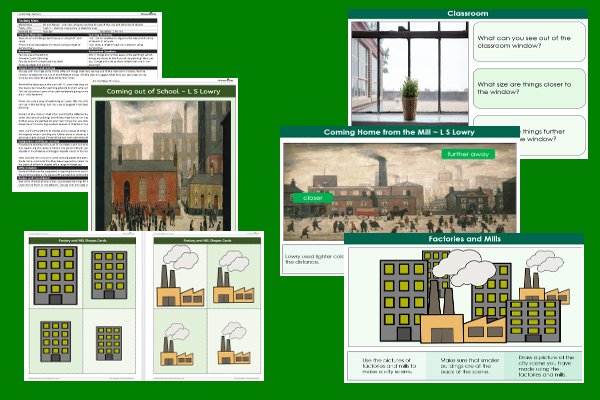Lesson Three – Factory Sizes

This art and design teaching pack for Key Stage One gets the children to practise using perspective to model and record the size and distance of objects in artwork of a urban community or landscape.
The class can identify and explain how Lowry represented scenes of different places in his paintings including adding buildings to the backgrounds of his artwork.
Download this teaching pack including a lesson plan, classroom activities and an interactive presentation to teach the children to practise using perspective to model and record the size and distance of objects in artwork of a urban community or landscape
Activities in this teaching pack include display posters to identify and describe the use of perspective in artwork by Lowry and a set of cards to build artwork illustrating an urban community using perspective to show the sizes and distances of objects.
The interactive presentation gets the children to explore how to use perspective to record the size and distance of objects in artwork showing life in a town or city.
This lesson can support development in explore and replicate the painting style and techniques used by a famous British artist by creating a scene of the school playground to match artwork by L S Lowry. There are teaching activities for shared learning, differentiated worksheets to support independent learning and an interactive presentation to introduce concepts and key skills.
-

Bible Stories
Research and illustrate how the teachings of Jesus are presented in different stories from the Bible
-

Word Matching
Identify, match and record the initial sounds that have been used in a range of cvc words beginning with different letters
-

Family Toys
Investigate and record how a selection of different toys and games that were owned by families have changed and developed over time
-

Subtraction Digits
Model and illustrate how to subtract pairs of single digit numbers within ten using concrete equipment and diagrams to support the subtraction calculations
